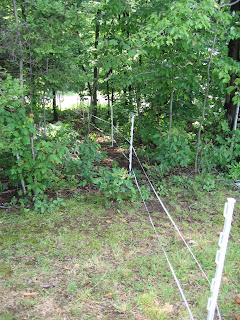I researched lots of homesteading books when I was deciding what breed of chickens to purchase. I knew I wanted some Buff Orpingtons. They are a dual purpose bird with decent egg and meat production. They are very good foragers. I mostly wanted them because they are so calm. This was important because I have a very loving and enthusiastic almost-two-year-old.
I wanted a rare/heritage breed, so I referenced my beloved American Livestock Breeds Conservancy http://albc-usa.org/. I chose Dominiques. They are considered the original American chicken breed. http://albc-usa.org/cpl/dominique.html They are excellent foragers and are known to hatch their own eggs. This was an important trait, since I want a self-sustaining flock.
Lastly, I wanted colored eggs, so I threw in some Aracaunas. They are often known as The Easter Egg chicken, since they lay many eggs of green and blue tints.
I ordered my birds from Murray McMurray Hatchery and was quite pleased. http://www.mcmurrayhatchery.com/index.html They were reasonably priced and I received strong, healthy chicks.
Here they are just a few days old. I used a red heat light so they wouldn't harm each other. We all know they peck each other to establish their "pecking order." The order establishes each individual's place in the flock. Each bird can peck all those below him, but none above. But chickens can become cannibals when they are overly crowded. They peck each other, draw blood, then the whole flock is drawn to the red spots and can inadvertently kill one of their own. The red bulb helps prevent this.
And here's a visit to the outdoors on a nice day. I purchased them in March, so they didn't get much time outside until they were feathered. Note the large stock tank I kept them in. I lined it with cardboard to facilitate easier cleaning. When it got too messy, I composted cardboard, pine shavings, and poop all together; I was left with a clean bottom to apply new cardboard and bedding.
And here they are finally in the coop and outside! They were so happy. The coop has two doors on each side, one low for chicken entry/exit and one high for ventilation. Before they were big enough to leave on open pasture, I rotated their fenced area from side to side. When both sides were used, we moved the coop with the skid steer.
These were some boards I had lined up for making a new raised bed. They think I made them a playground.
Here are the Dominiques.
And our king pin.









